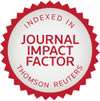 open directory as PDF-file open directory as PDF-file
Further information and access to full text (for registered users) are available at EconPapers, EBSCO, JSTOR, WISO and DigiZeitschriften.
Content:
Editorial Peter Tillmann, Joachim Wagner, Nicolas Ziebarth: Editorial: Best Paper Award 2022 JBNST - Vol. 243/6 - 2023, pp. 597-598.
Original Articles Thomas J. Emery, Mitja Kovac, Rok Spruk: Estimating the Effects of Political Instability in Nascent Democracies JBNST - Vol. 243/6 - 2023, pp. 599-642.
+ show abstract- hide abstractIn this paper, we revisit and examine the effect of political instability on institutional quality. To this end, we exploit the crackdown of government cabinet in 2008 that led to almost two decades of pervasive political instability using the unique case of Slovenia and estimate the average treatment effect of political instability and the missing counterfactual scenario for the period 1996–2020. Based on large-scale Bayesian analysis with Metropolis–Hastings algorithm, we extract the residual component of institutional quality from the variation in predetermined unobserved characteristics. Across more than 1.5 million sequenced random samples, we construct novel time-varying estimates of institutional quality at the local and regional level. Our difference-in-differences and synthetic control estimates emphasize a rampant deterioration of institutional quality in response to political instability with evidence of weakened rule of law, less effective public sector, decreased political accountability, and more widespread prevalence of power abuses. The estimated negative effects of political instability are robust to a variety of placebo checks across more than 12 billion placebo averages for institutional quality outcome variable using random sampling method of treatment permutation. Christoph Baumgartner, Stjepan Srhoj, Janette Walde: Harmonization of Product Classifications: A Consistent Time Series of Economic Trade Activities JBNST - Vol. 243/6 - 2023, pp. 643-662.
+ show abstract- hide abstractFirm-product data provide information for various research questions in international trade, industrial or innovation economics. However, working with these data requires harmonizing product classifications consistently over time to avoid internal validity issues. Harmonization is required because classification systems like the EU classifications combined nomenclature (CN) for goods or the Prodcom for the production of manufactured goods undergo several changes. We have addressed this problem and developed an approach to harmonize product codes. This approach tracks product codes from 1995 to 2022 for CN and 2001 to 2021 for Prodcom. Additional years can be conveniently added. We provide the harmonized product codes for CN and Prodcom in the selected period’s last (or first) year. Our approach is summarized in an open-source R package so that researchers can consistently track product codes for their selected period. We demonstrate the importance of harmonization using the micro-level trade data for Croatia as a case study. Our approach facilitates working with firm-product data, allowing the analysis of important research questions. Harald Tauchmann, Ansgar Wübker: Weight Loss and Sexual Activity in Adult Obese Individuals: Establishing a Causal Link JBNST - Vol. 243/6 - 2023, pp. 663-698.
+ show abstract- hide abstractObesity may not only be linked to undesirable health outcomes but also to limitations in sexual life. The present paper aims to assess whether there is a causal relationship between weight loss and sexual activity in adult obese individuals. To address the endogeneity of weight loss that is likely to result in biased estimation results, the analysis is based on data from a randomized field experiment. In this experiment, financial weight-loss rewards were offered to a random subgroup of participants and can be used as an exogenous source of weight variation in an instrumental variables approach. Estimation results indicate that for obese males losing weight, both the probability of being involved in a sexual relationship and the frequency of sexual intercourse increases. The same pattern of results is found when pooling both sexes in the sample. Due to the small share of women in the sample, the analysis yields no reliable results specifically for females.
Data Observer Vera Freundl, Elisabeth Grewenig, Franziska Kugler, Philipp Lergetporer, Ruth Schüler, Katharina Wedel, Katharina Werner, Olivia Wirth, Ludger Woessmann: The ifo Education Survey 2014–2021: A New Dataset on Public Preferences for Education Policy in Germany JBNST - Vol. 243/6 - 2023, pp. 699-710.
+ show abstract- hide abstractThe ifo Education Survey is a representative opinion survey of the German voting-age population on education topics that has been conducted annually since 2014. It covers public preferences on a wide range of education policy issues ranging from early childhood education, schools, and apprenticeships to university education and life-long learning. The dataset comprises several survey experiments that facilitate investigating the causal effects of information provision, framing, and question design on answering behavior. This paper gives an overview of the survey content and methodology, describes the data, and explains how researchers can access the dataset of over 4000 participants per wave. Katharina Grienberger, Markus Janser, Florian Lehmer: The Occupational Panel for Germany JBNST - Vol. 243/6 - 2023, pp. 711-724.
+ show abstract- hide abstractThe occupational panel for Germany provides a comprehensive database for studying the development of occupations over time. It is based on the IAB Employment History (BeH), which contains all social security notifications that employers have to submit for their employees subject to social security and minor employees. The current version of the panel covers the years 2012–2018. Information on employees is aggregated at the occupational level such as shares by age, qualification or gender. In addition, occupational information from the expert database BERUFENET of the Federal Employment Agency, e.g. the substitution potential or the Digital-Tools Index, is prepared and merged to the occupational panel.
Miscellaneous Peter Winker: Annual Reviewer Acknowledgement JBNST - Vol. 243/6 - 2023, pp. 725-727.
|

